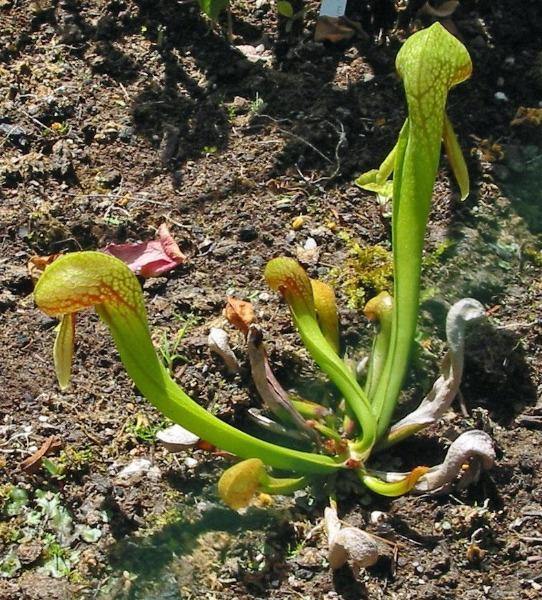
Darlingtonia californica, also known as the California pitcher plant or cobra lily. It is a carnivorous plant from the new world pitcher plant family. It is the only species in the Darlingtonia genus. The cobra lily is found in Northern Californi. And it also found Oregon. Despite the cool and humid climate. It can also survive in dry conditions for many months each year. This ability sets it apart from other carnivorous plants like Heliamphora, Nepenthes, or Sarracenia. The cobra lily thrives near bogs, pools, rocky slopes, creeks, and seeps with cold running water. It can also grow in drainage ditches and along roadsides. Though it is often grown in gardens. It is considered uncommon in the wild.

The name “cobra lily” comes from the plant’s tubular leaves. Which look like a rearing cobra with forked fangs. The leaves can be yellow to purplish-green.
This plant was discovered in 1841 during the Wilkes Expedition by botanist William D. Brackenridge at Mount Shasta in Northern California. In 1853, John Torrey named the genus Darlingtonia. After botanist William Darlington. The cobra lily has received the Royal Horticultural Society’s Award of Garden Merit in the UK for its cultivation success.
Darlingtonia Cultivation
Darlingtonia californica, or cobra lily, can be challenging to grow due to its specific needs. These plants thrive in cool to warm daytime temperatures. And also cool to cold nighttime temperatures. They naturally grow in bogs or near streams with cold mountain water. So their roots need to stay cooler than the rest of the plant. It’s important to mimic these conditions in cultivation by using cold, purified water. On hot days, placing ice cubes of purified water on the soil helps. Cobra lilies prefer sunny spots in warm, humid conditions. But part-shade if humidity is low or fluctuating.

Growing cobra lilies from seeds is slow and difficult. So it’s better to propagate them from their stolons in late winter or spring. When a small cobra plant appears at the end of the stolon, cut it into sections with a few roots attached. Place these sections on cool, moist sphagnum moss in a bright, humid location. New cobra plants will eventually grow from each section.
Cobra lilies need a cold winter dormancy to survive long-term. During this period, which lasts 3 to 5 months, plants stop growing. And die back to their rhizomes in very cold winters or keep their leaves in cool winters. In spring, mature plants produce a single flower followed by large pitchers. They continue to produce smaller pitchers throughout the summer.
Enthusiasts have cultivated three color morphs: all green, all red, and red-green bicolor. Wild-type plants are green in moderate light. And it also bicolor in intense sunlight.



